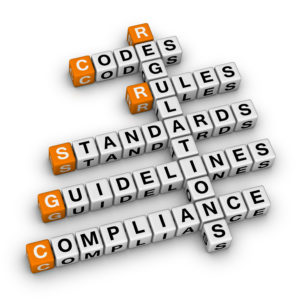Policy and Procedure Documents Without Tears
If you are a professional writer in a corporate setting, and are extremely unlucky, you may be called upon to write policy and procedure (P&P) documents.
This is actually a good thing, for the company if not for you. Many P&P documents are written either by lawyers, in which case they are completely incomprehensible, or by some line manager, in which case they are…well, ditto. The point is, most P&P documents are not well written. This can cause problems for the company if a dispute arises: Was a certain policy observed or a procedure followed? Was it supposed to be followed? If the relevant documents are not well-written, it can be hard to tell.
Ideally, corporate P&P documents should be written by someone who (a) possesses a firm command of good writing principles and (b) knows the characteristics of a good P&P document. I’ll assume you have (a) under control and will focus in this article on (b).

Common P&P Problems…
Most problems with P&P documents fall into the following categories:
- Scope: When it isn’t clear when a policy or procedure is applicable, its applicability is subject to interpretation, which can change over time with changes in management. This means that a policy that was considered OK to follow (or not) one day might get you in trouble the next.
- Breadth: Some P&P documents try to cover too much ground, making them difficult to follow and unwieldy to maintain.
- Assumptions: Some documents assume users have knowledge or skills without explicitly saying so. This causes trouble, for example, when the user doesn’t know the five or six sub-steps involved in getting from Step 1 to Step 2.
- Definitions: This one is related to the previous point. Not everyone is going to know the meaning of each term or abbreviation within the context of the document, leading people down wrong paths.
- Coverage gaps: Even when the scope of a P&P document is abundantly clear, if not all cases within that scope are addressed in the document, the user is left to wonder (and assume or guess) what to do, often with unpleasant results.
- Conflicts: Some documents suffer from internal conflicts (that is, they contradict themselves), and some conflict with other applicable policies and procedures.
…and How To Avoid Them
Let’s have a look at how these problems can be avoided:
Scope: The scope statement is the most important part of any P&P document. It should clearly state who is responsible for following the policy or procedure, and under what circumstances it should be followed. The statement should be thorough and detailed so as to leave no room for doubt.
Breadth: If the document has more than a few pages, it’s probably too long and trying to do too much. Find ways to break it into smaller, more manageable chunks that are easier to follow.
Assumptions: This is where you have to know your audience and what they bring to the table. This shouldn’t be difficult because a P&P document should have a narrowly defined audience. Get out of your cube, go talk to them, and find out what they need to accomplish and what skills and knowledge they actually have when using a policy or procedure.
Definitions: A good P&P document has a section just for definitions. Every technical term and abbreviation should be defined. Err on the side of too many terms defined, rather than too few.
Coverage gaps: These can be tricky to spot, especially if you lack domain knowledge in the area you’re writing about. A good strategy is to start with the “happy path” (the steps followed when everything goes right), and then ask the question: What can go wrong, and what steps should be followed when it does?
Conflicts: Identifying conflicts requires careful review by all stakeholders. Some conflicts may not be apparent until the document is used in actual practice. Conflicts among documents can be even harder to spot, because the entire library of documents must be considered as a whole. (Preventing conflicts, by the way, is another reason to avoid overbroad policies and procedures.)
Do Some Homework Before You Start
This summary barely scratches the surface of the topic of P&P documentation. If you are new to it, do some research for more in-depth discussion of best practices. You also need to do some research in the areas you will be writing about. Talk to the people who are actually on the hook for using the documents—they have a better idea of what actually happens, versus what management thinks happens.
And if you do a good job, you’ll be rewarded by owning it for the rest of your tenure. Happy writing!
Morris Vaughan is a technical writing consultant in Los Angeles, California.

